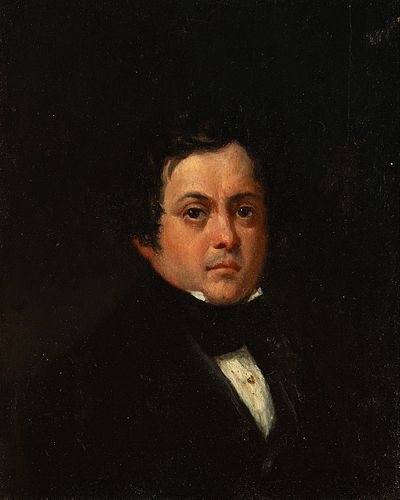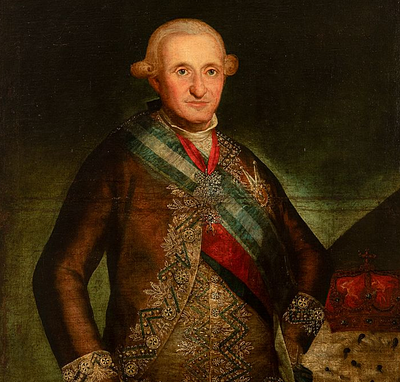Spanish school; ca. 1830. "Portrait of a Gentleman. Oil on panel.
Lot 47
About Seller
Setdart Auction House
Carrer Aragó 346
Barcelona
Spain
Setdart Subastas was born in 2004 and is currently the first online art auction in Spain with solidity, prestige and reliability guaranteed by our more than 60,000 users. Setdart has a young, dynamic and enterprising team ready to successfully manage the purchase and sale of art works through custom...Read more
Estimate:
EUR€500 - EUR€700
$520.83 - $729.17
Absentee vs Live bid
Two ways to bid:
- Leave a max absentee bid and the platform will bid on your behalf up to your maximum bid during the live auction.
- Bid live during the auction and your bids will be submitted real-time to the auctioneer.
Bid Increments
| Price | Bid Increment |
|---|---|
| EUR€0 | EUR€10 |
| EUR€200 | EUR€25 |
| EUR€500 | EUR€50 |
| EUR€1,000 | EUR€100 |
| EUR€3,000 | EUR€200 |
| EUR€5,000 | EUR€500 |
| EUR€10,000 | EUR€1,000 |
| EUR€20,000 | EUR€2,000 |
| EUR€50,000 | EUR€5,000 |
About Auction
By Setdart Auction House
Sep 22, 2021
Set Reminder
2021-09-22 09:30:00
2021-09-22 09:30:00
America/New_York
Bidsquare
Bidsquare : 22nd September - ARAS JÁUREGUI Private Collection - Old Masters, 19th & 20th Century
https://www.bidsquare.com/auctions/setdart-auction-house/22nd-september---aras-j-uregui-private-collection---old-masters-19th-20th-century-7427
ARAS JÁUREGUI Private Collection - Old Masters, 19th & 20th Century Setdart Auction House sofia@setdart.com
ARAS JÁUREGUI Private Collection - Old Masters, 19th & 20th Century Setdart Auction House sofia@setdart.com
- Lot Description
Spanish school; ca. 1830. "Portrait of a Gentleman. Oil on panel. Presents a period frame. Measurements: 14 x 11 cm; 18 x 15,5 cm (frame). Portrait of a gentleman, who has been captured by the artist in a diplomatic attitude looking directly at the spectator. The figure is placed in the foreground, bust-length, against a neutral, dark background, which makes his presence very exalted due to his vividly illuminated face. In fact, the carefully studied lighting is the main expressive resource used by the painter; it is a focused, directed, artificial light that enters the composition from the front and falls directly on the main area of the image, the figure's face, creating great clarity on his face and clothing, thus modelling his facial features and anatomical volumes with great naturalism. The dominant chromatic range revolves around dark tones, combining white with a more sober palette of maroons and blacks, in a restrained intonation typical of the portraitist of this period. As in the rest of Europe, portraiture became the genre that gained most prominence due to the excellence of Spanish painting as a result of the new social structures that were established in the Western world during this century, embodying the ultimate expression of the transformation in the taste and mentality of the new clientele that emerged among the nobility and the wealthy gentry, who were to take the reins of history in this period. While official circles gave precedence to other artistic genres, such as history painting, and the incipient collectors encouraged the profusion of genre paintings, portraiture was in great demand for paintings intended for the more private sphere, as a reflection of the value of the individual in the new society. This genre embodies the permanent presence of the image of its protagonists, to be enjoyed in the privacy of a studio, in the everyday warmth of a family cabinet or presiding over the main rooms of the house.
- Shipping Info
-
In-house shipping available. Please inquire at admin@setdart.com.
-
- Buyer's Premium



 EUR
EUR CAD
CAD AUD
AUD GBP
GBP MXN
MXN HKD
HKD CNY
CNY MYR
MYR SEK
SEK SGD
SGD CHF
CHF THB
THB














